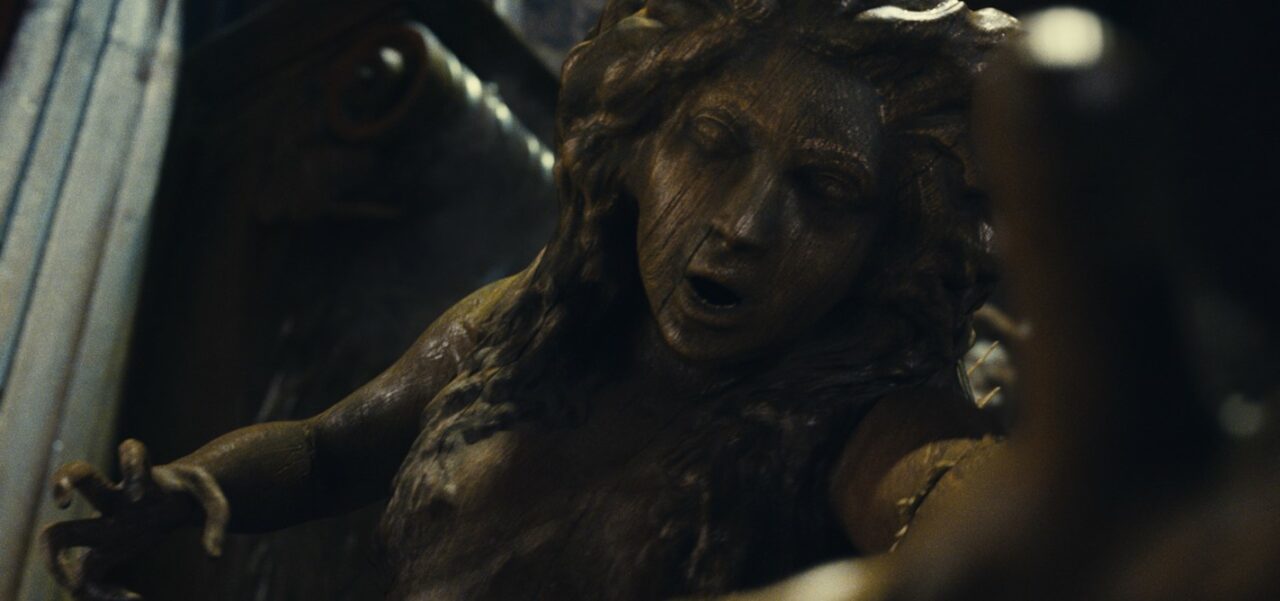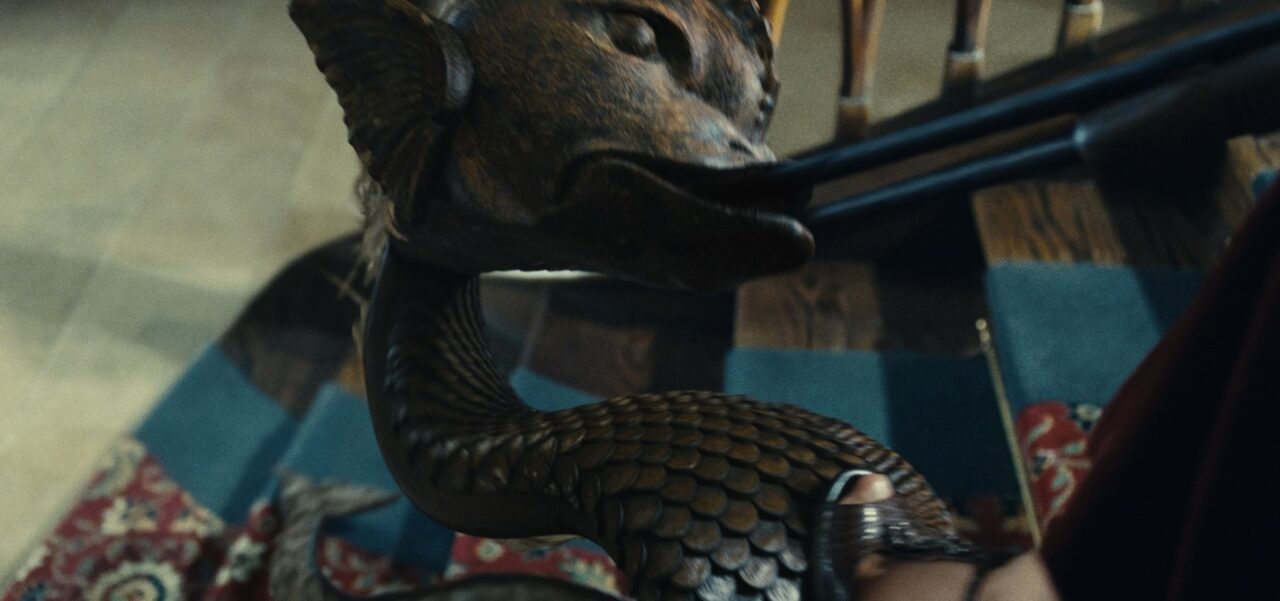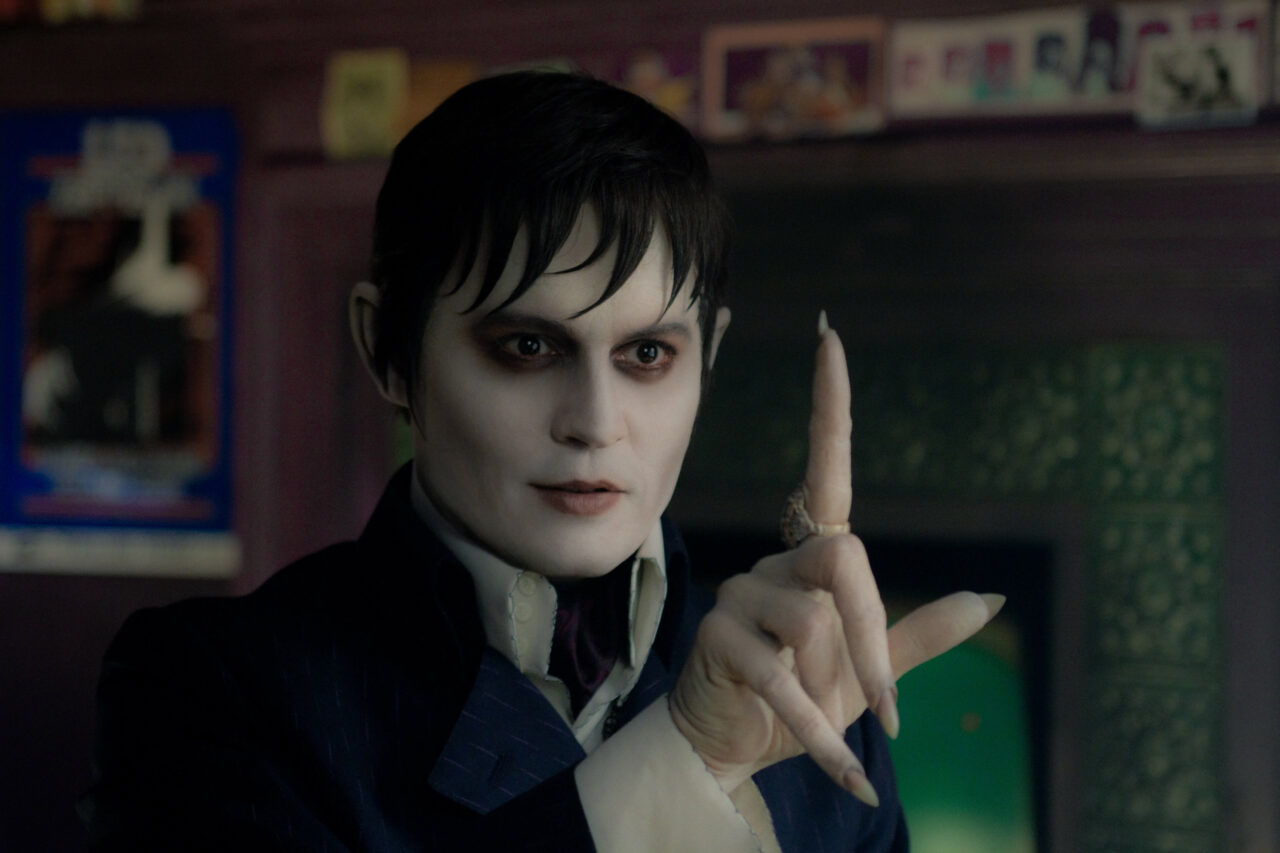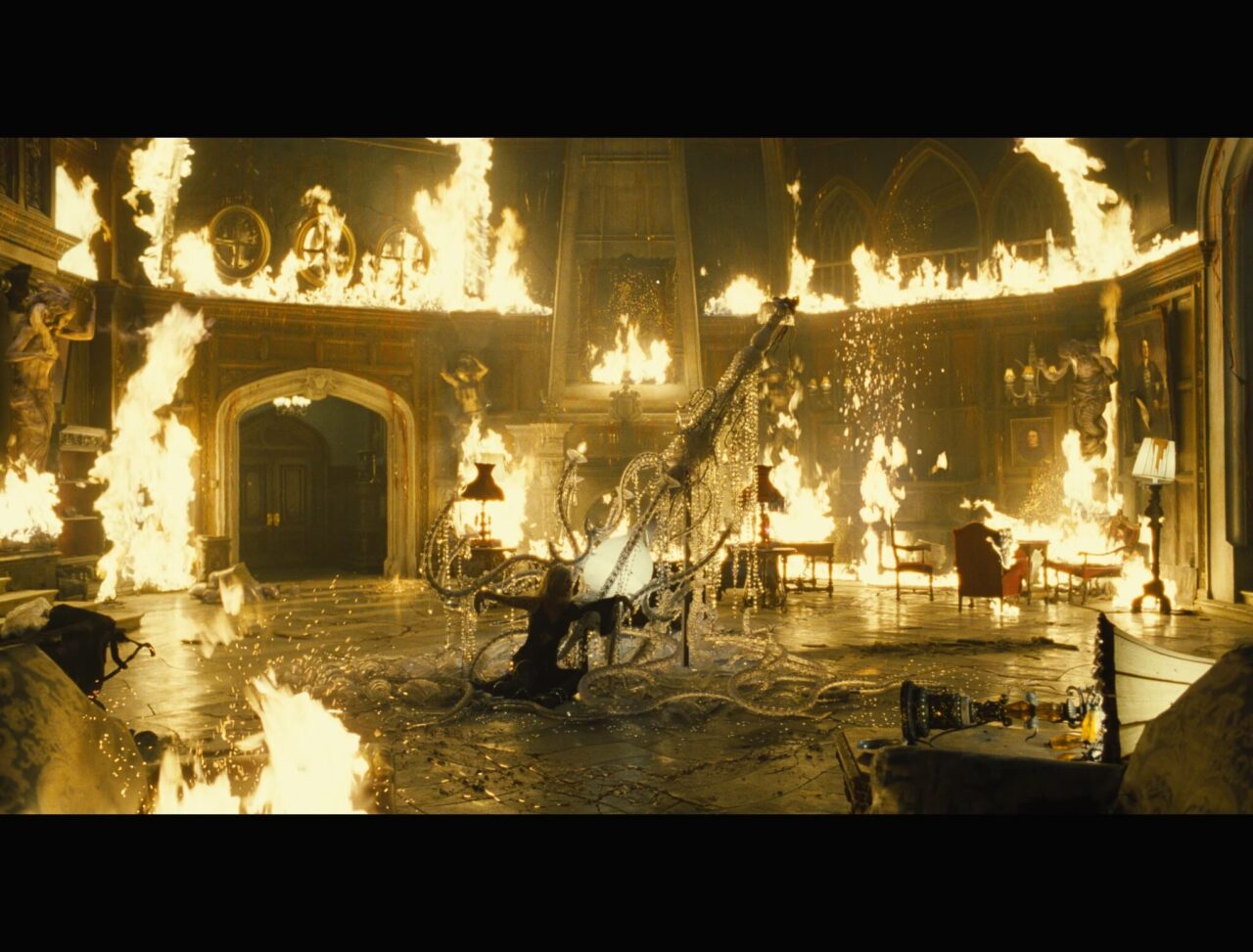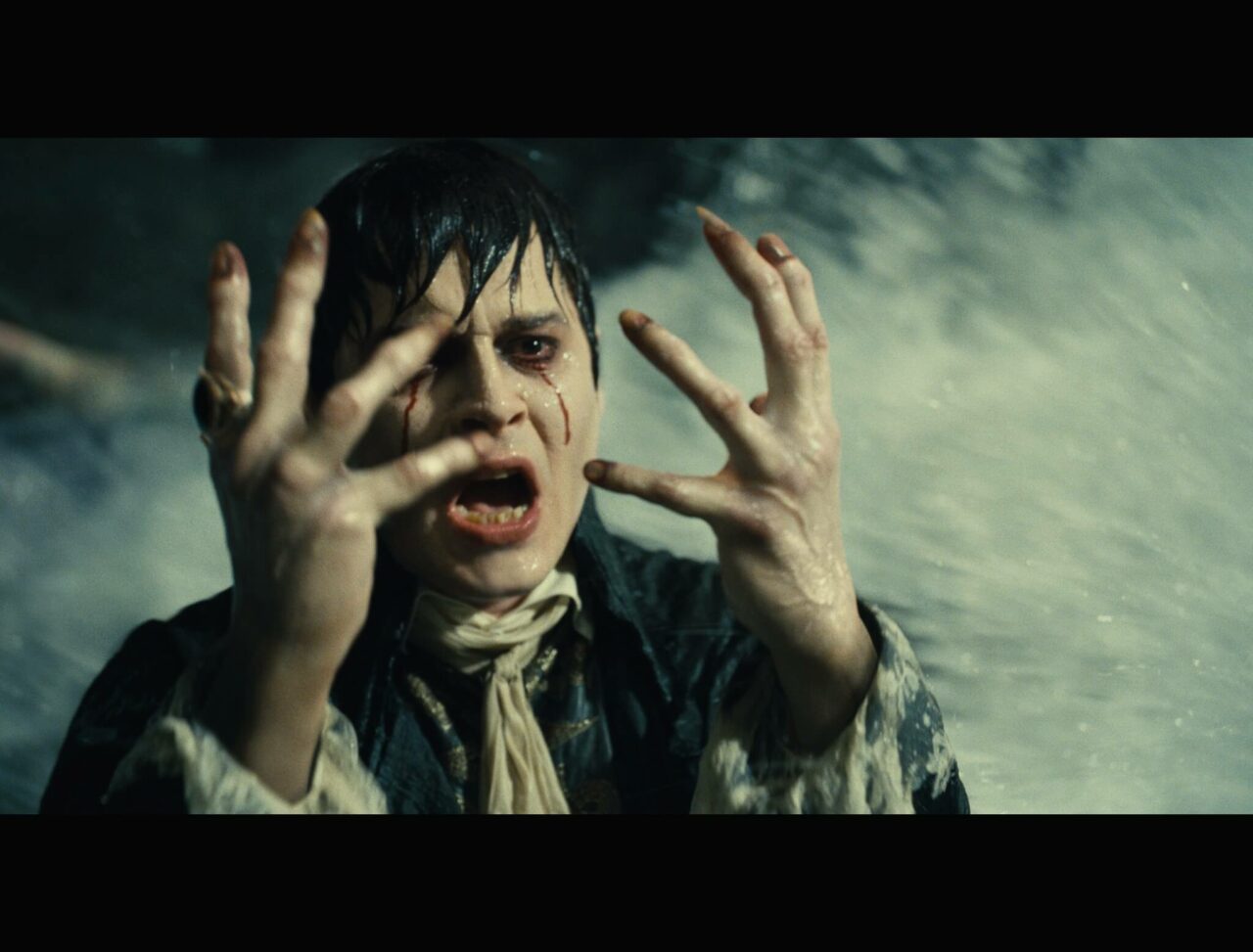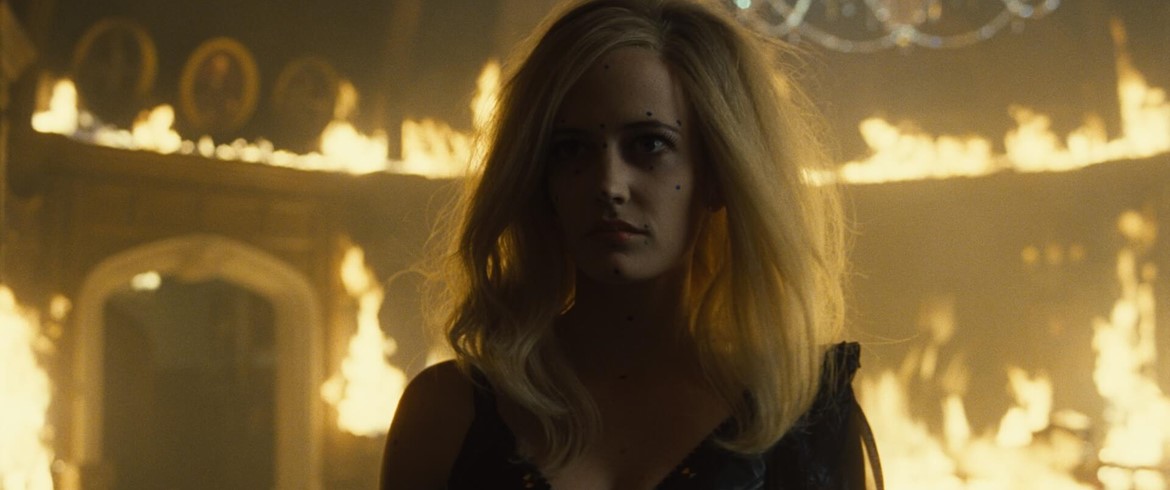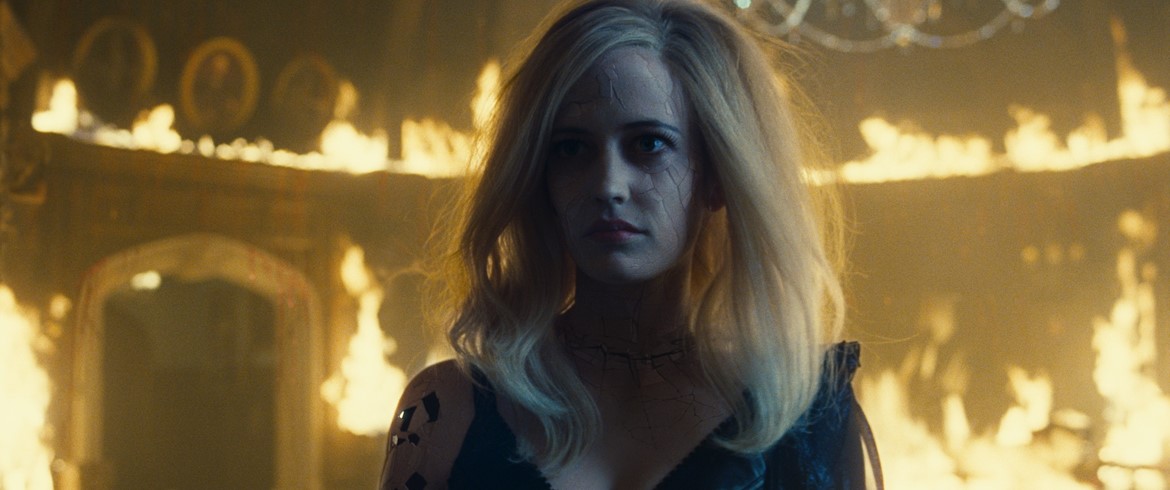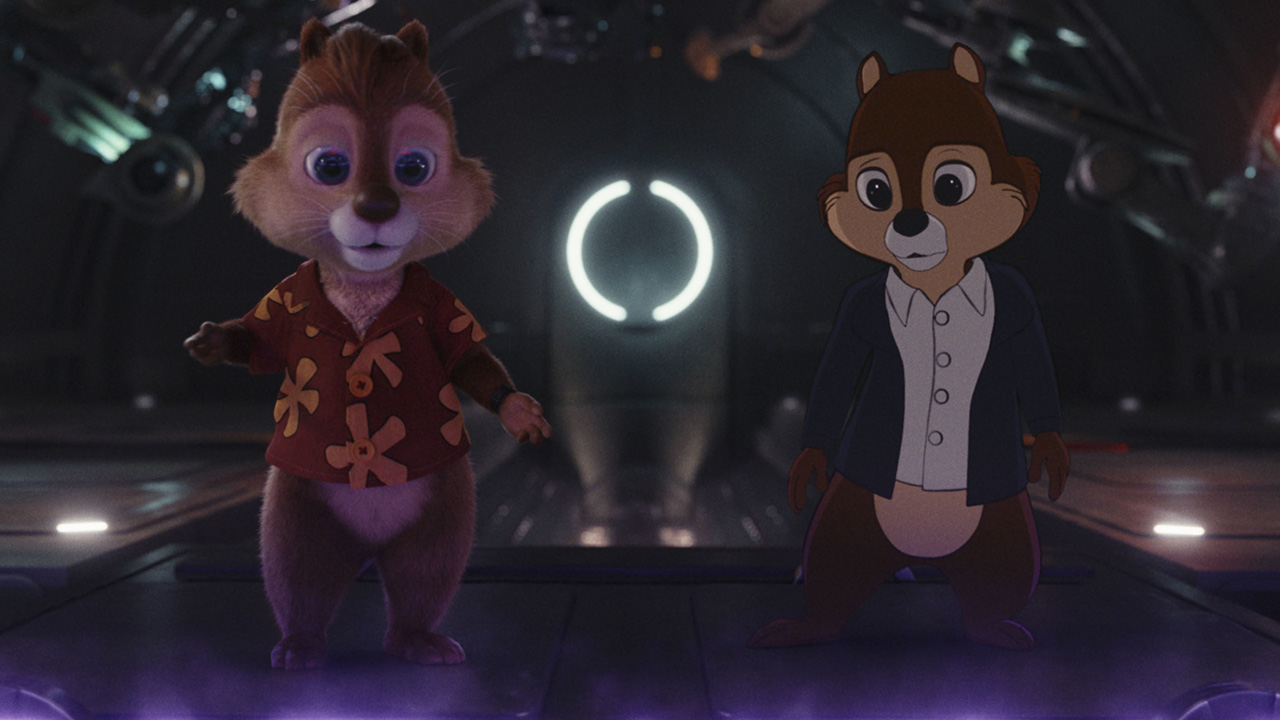Directed by Tim Burton and Starring Johnny Depp, Michelle Pfeiffer, Eva Green and Chloe Moretz, Dark Shadows is a 2012 gothic horror comedy film based on the 1966–1971 gothic horror soap opera.
In the year 1752, Joshua and Naomi Collins, with young son Barnabas, set sail from Liverpool, England to start a new life in America. But even an ocean was not enough to escape the mysterious curse that has plagued their family. Two decades pass and Barnabas has the world at his feet—or at least the town of Collinsport, Maine. The master of Collinwood Manor, Barnabas is rich, powerful and an inveterate playboy…until he makes the grave mistake of breaking the heart of Angelique Brouchard (Eva Green). A witch, in every sense of the word, Angelique dooms him to a fate worse than death: turning him into a vampire, and then burying him alive. Two centuries later, Barnabas is inadvertently freed from his tomb and emerges into the very changed world of 1972. He returns to Collinwood Manor to find that his once-grand estate has fallen into ruin. The dysfunctional remnants of the Collins family have fared little better, each harboring their own dark secrets. Matriarch Elizabeth Collins Stoddard (Michelle Pfeiffer) has called upon live-in psychiatrist, Dr. Julia Hoffman (Helena Bonham Carter), to help with her family troubles.
MPC VFX Supervisors Arundi Asregadoo and Erik Nordby led the teams, delivering 340 shots for the movie.
Erik Nordby’s team at MPC Vancouver were tasked with the completion of just over 90 shots. The main focus was on two sequences set in and around a 200 foot high sea-side cliff referred to as Widow’s Hill. It is here that much of the pivotal action takes place between Barnabas and his heroine from each respective time period. Twice in the movie people hurl themselves off the cliff onto the rocks below. But due to the power of the vampire bite, unexpected results push the movie into very different directions.
The cliff itself was comprised of seven large slices of rock-face, all built at different resolutions depending on their usage in the movie. The cliff edge, where much of the action takes place, needed to match a set piece built during production. This is where the first and highest LOD slice of cliff resided. Several other promontories were then built along the coastline. These were mainly featured in large establishing shots of the area.
For all of the cliff shots a combination approach was taken splitting the tasks between DMP/Env and traditional assets. The rough shape of the cliff was built, and some portions of it were sculpted in Z-brush to help add detail. It was lit in such a way to pull as much topology as felt natural. This was then married with a bespoke set of Env textures that were projected onto the slices.
Above the cliff was a pine forest and the Manor that held the Collins family. The forest was built by seeding individual trees using VUE software and then painting over the top. This allowed a lot of natural variation and parallax on the moving shots.
Vancouver was also tasked with creating the large establishing shots of Liverpool that open up the film. With the exception of the family boarding a walkway on a green screen set, this work was entirely CG. Once again, the Providence Boat was re-purposed and re-textured, forming the focus of the shot. An entire CG dock was built using digital props and buildings cobbled from various other shows. Finally basic CG water, fog and mist were built onto cards to set the scene.
MPC London’s main award focused on the supernatural showdown between Johnny Depp’s character, Barnabas Collins and his scorned ex-lover, the witch Angelique, played by Eva Green. All of this unfolds in the grand foyer of Collinwood manor. The action involved wooden statues (caryatids) coming to life, Angelique’s gradually cracking skin, a vengeful ghost, and of course no horror film would be complete without a werewolf, this time a teen she-wolf, played by Chloe Grace Moretz.
In addition the team also had to augment the scene with various destruction elements, including bleeding walls, floors cracking and flowers dying.
One of the biggest challenges was depicting the transformation of Angelique into a cracking ‘porcelain doll’. The team worked on over 115 shots showing her gradual calcification and break down, as well as a shot where she pulls a beating heart from her chest. The effect involved an intensive rigging study as well as large team of roto-animators, who painstakingly achieved an incredibly tight level of match-animation to all Angelique shots. These tracks were finessed further by a team of technical animators, who replaced the cracked model of Angelique into the shots. In all, 7 different models were constructed during the building phase, according to how the cracks increase and deepen throughout the scene, and a team of lighting TDs were charged with lighting both the cracked and clean or ‘un-cracked’ versions for each shot, for ease of manipulation in compositing. The compositing team did a great deal of 2D tracking themselves on some of the shots with less movement, and made the finishing touches to each shot using the two lighting passes and their own 2D tools.
Chloe Moretz’ she-wolf character was another great challenge for the team. Having some experience with CG werewolves (Wolfman, Harry Potter, X-Men: First Class), MPC’s pipeline was well prepared for this work, however her design was far more stylized than anything we’d previously created. The art department initially, followed by a fairly sharp round of 3D groom and lookdev, were able to create something very close to Tim’s initial vision, and she was rendered successfully, complete with animated wolf legs, in the shots depicting her attempted attack on Angelique during the showdown.
MPC’s DMP, FX and animation departments worked closely on bringing wooden statues to life in the Grand Foyer. As Angelique casts her spells around the house, we see her bring the myriad wooden statues including a serpent and caryatids to life, which are then shot by Michelle Pfeiffer’s Liz and one caryatid even captures Jonny Depp and restrains him for a considerable portion of the edit. The statues were built with considerable flexibility in their rigs so that they were able to perform a number of eerie movements, some more violent than others. MPC’s Animation Supervisor, Peta Bayley, had her team focus on the statues as a single ‘beat’ of the action and the FX team added ‘breaking away’ FX as the statue tears away from the wall. The DMP team had a crucial role in creating the feel of increasing levels of blood and destruction unfolding in the background. A shorter segment at the start of the scene shows some hero shots, which utilize some lovely live action elements, to sell the idea of the blood emitting from statues and cracks. Our 3D DMP department then had to sustain the build up of this through 200 shots without ever distracting from the action in the foreground.
